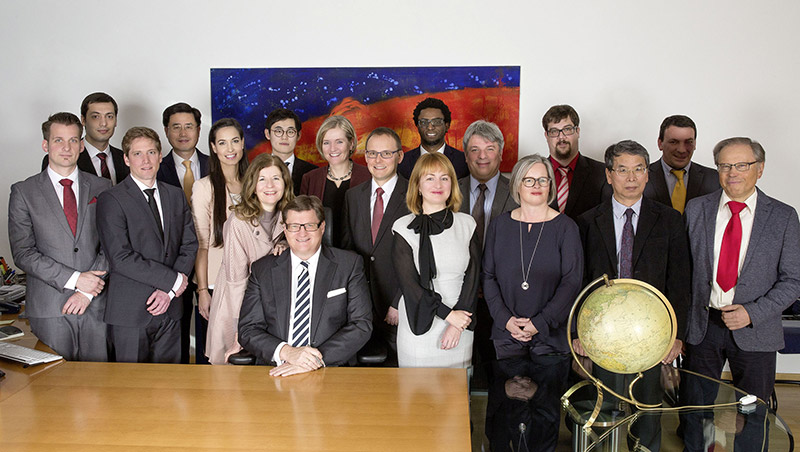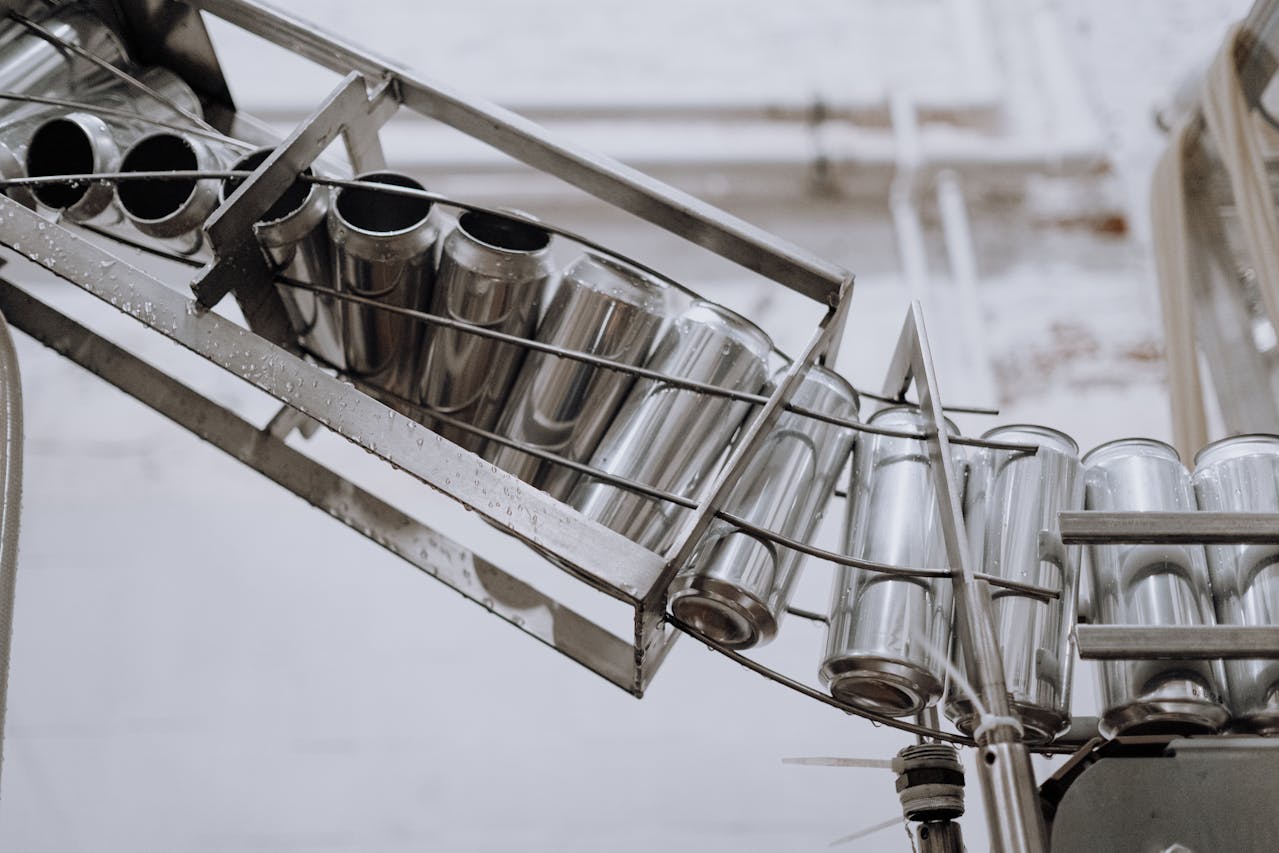Mr Markus Moll
April 22, 2021

He’s not just a renowned stainless steel pundit, but is an equally avid cross-country skiing enthusiast. In an exclusive interview with Stainless Post, Managing Director, SMR – Steel & Metals Market Research, Mr Markus Moll takes us through his incredible journey, while sharing insights on the global stainless steel market, opportunities and the future for the Indian stainless steel sector, the role of automation in the industry, and much more!
Tell us about yourself. What was the reason behind setting up SMR Group?
I was born and brought up in Reutte, in Tyrol, Austria- the city of winter sports. I am a mechanical engineer and an economist. I hold a Master’s degree in business from the University of Innsbruck, Austria. I am also a cross-country skiing enthusiast and a mountain biker. My association with the stainless steel industry is now over 30-year old. I started my own company SMR in 1994 in Dusseldorf, Germany with the objective of providing focused market data to the stainless steel industry. Two years later, we moved to Austria. Our role as SMR has always been to predict the future of the industry. For that, our team travels the world for nearly half a year in order to interact with the end users of stainless steel. This helps us gain insights about the application preference for the metal among end-users across the world. We then develop data banks based on our research and draw up projects for clients. We also organise regular seminars and conferences to apprise producers and other stakeholders of relevant and latest market intelligence.
I remember assisting my first client, a company that is now a part of Outokumpu Group, in researching for global stainless steel wire rod markets. We started from long products and then added other products in our domain. Today, we hold the biggest intelligentsia for Nickel-based alloys. We are also developing studies on engineering steels. Ever since then, SMR has been dedicated to systematically drawing up reliable databases and short, mid, and long-term forecasts not just for the stainless steel sector, but also for special steels and key raw materials like nickel, chrome and scrap.

In your opinion, what makes stainless steel special? What is your prediction of the Indian stainless steel market in the coming time?
Stainless steel is a future-ready metal. It has all the properties to sail through any possible challenges in the near future. Earlier, it was majorly used for processing equipment like tanks and heat exchangers. However, gradually, by mid 1970s, durable consumer goods started coming up in stainless steel. This was the first time that the metal actually made its presence felt among end-producers. Even though it was a little expensive, it did make a difference with its greater life. However, after the arrival of Argon-Oxygen Decarburization (AOD) technology in the manufacturing process, stainless steel prices came down. In 1996, I made my first visit to India and also got a chance to meet Mr Ratan Jindal, whom I found to be a man with several ideas and a vision for the industry. I also got to interact with Mr N C Mathur, who is a dear friend and the ‘ambassador of stainless steel’ in my view. The
Indian stainless steel market is a promising market with ample growth opportunities. As per our figures, Indian stainless steel production is on its way to reach 4.4 million tonnes (MT) in 2021. The expected growth rate till 2026 is ~6% per year. We believe that by 2026, India will have 6 MT stainless steel market with its per capita consumption reaching about 4 kg.

How has the pandemic affected the stainless steel market? What are the lessons learnt from the pandemic?
The global market was severely hit by the pandemic. There were double digit reductions in stainless steel production across the world, apart from China. Chinese stainless steel consumption even grew by 3-4% after the onset of the pandemic. While some areas are still reeling under the pressure of the crisis, we expect a gradual recovery to pre-COVID levels by 2022.
After the pandemic, global warming will be the next ‘big thing’. ‘Decarbonization’ will be a challenge, but also a major opportunity for our industry. As part of the so called ‘Green Deal’, Europe plans to invest ~750 bn Euros in decarbonizing the whole society and industry by 2050. The key tool for that will be Hydrogen. Interestingly, this development will add ~20% to the stainless steel market in Europe alone. This is so because stainless steel will be integral to the entire Hydrogen supply chain, from production and liquidation to transportation, storage, and other ancillary applications. In my opinion, this will be biggest opportunity for the stainless steel market in the next 20 years.
The pandemic has further triggered the wave of blunt protectionism in the stainless steel industry, which started with the US imposing restrictions under Section 232. I believe fair competition is good for the industry in every country, as it helps us become more cost-competitive. However, that’s not to imply that dumping or subsidized imports should be left unchecked. One area where India must also focus on is its industrial infrastructure. Through better transportation channels, energy prices, power requirement, land cost, financial assistance, ease of doing business, and the development of an overall ecosystem, can we sustain growth for the stainless industry.
As for the Indian stainless steel industry, it will help them to further climb up the quality ladder, and make inroads into those applications where their contribution is still nascent, such as desalination plants and other sophisticated applications.

What will be a viable approach to adopt automation in the industry considering that transition will be challenging?
The stainless steel industry has always had a strong focus on technology, despite the fact that the industry has lagged behind in real automation. With Industrial Revolution 4.0 stepping in, we should be preparing for a time with minimal human intervention in the production process. In my opinion, a viable way would be to not imagine a 100% human-free steel plant, but a dedicated unit or cell in the plant that is 100% automated. Consequentially, this unstoppable trend will have societal implications, say new tax systems, etc. However, with timely and substantial public-private interventions, this innovation can
be embraced in a dignified manner. The stainless steel industry is not amongst the ‘Industry 4.0’ leaders currently and has got a long way to go.
What will be the major application areas for stainless steel in the coming time?
Home and lifestyle products in stainless steel are big these days. Jindal Stainless is already a leader in this segment with their flagship brand- Arttd’inox. Apart from that, everything that is directly or indirectly related to green energy will demand stainless steel applications. As discussed before, stainless steel will play a crucial role in carbon reduction by means of hydrogen applications. Chemical and petrochemical industries will thus bank upon stainless steel. Apart from that, the catering domain and hospitality business are bound to show a positive trend for stainless steel demand. As per our predictions, global stainless steel is expected to grow by 4-4.5% per annum in the next 20 years.

What has been the most rewarding moment for you in this 26-year journey?
One of the highlights of my professional career was in during a conference in Ahmedabad, India in 1998. Having established SMR just four years back, I was addressing the Indian stainless steel producers on a list of 10 things that Indian producers must avoid. I remember receiving a grand standing ovation from that audience. It was heartening to see such a positive feedback coming in from reputed and experienced producers and consumers. I also remember being pulled in, along with Mr Jindal, for dancing on Gujarati music with the artists. It is these off-the-protocol happenings that we remember throughout our lives.






